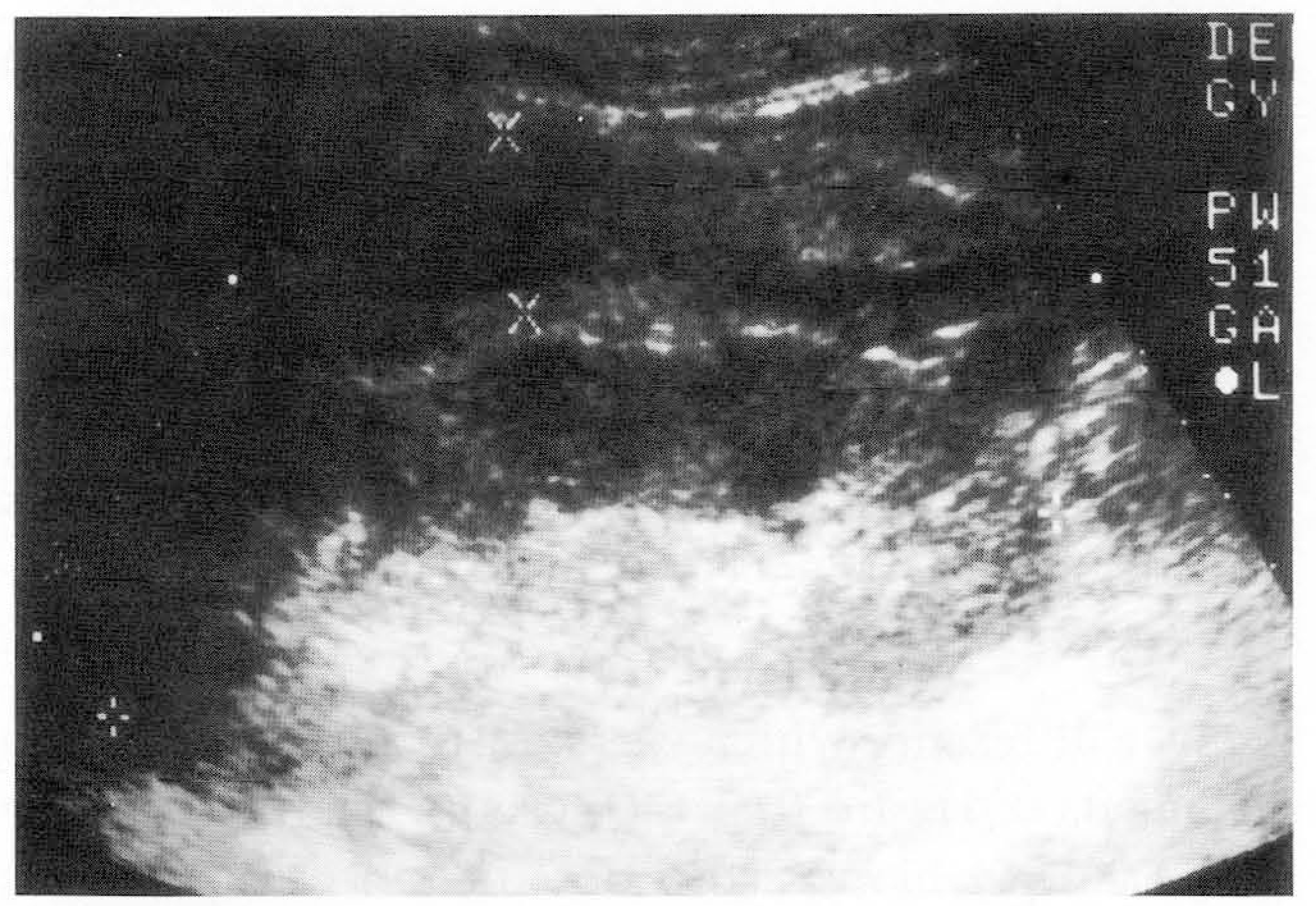Abstract
Purpose :
To compare the efficacy of 14 gauge(G) Vim-Silverman needle biopsy with that of 16G automatic gun biopsy for kidneys and to determine the optimal needle size for renal biopsy.
Materials and Methods :
We retrospectively reviewed the pathologic and medical records of 119 (110 native, 9 allograft) patients who had undergone 14G Vim-Silverman needle biopsy and 71 (34 native, 37 allograft) who had undergone 16G automatic gun biopsy. The number of retrieved glomeruli and post-biopsy complications were compared between the two groups. Ex vivo renal biopsies of a dog were performed using an automatic gun mounted with 14G_ 20G needles and the numbers of retrieved glomeruli were compared.
Results :
The number (mean 土 standard deviation) of retrieved glomeruli per biopsy in native/allograft/total kidneys was 32.1 ±20.9/24.0± 15.2/31.5±20.6 in the 14G Vim-Silverman needle biopsy group, and 26.9±16.2/l4.3±10.l/20.9± 14.9 in the 16G automatic gun biopsy group. In the dog, the number of retrieved glomeruli per biopsy was 17.2±6.3/9.2±3.9/5.7±4.5/3.9±2.6 in the 14G/16G/ 18G/20G groups, respectively.
Conclusion:
Although significantly more glomeruli were retrieved in the 14G Vim-Silverman needle biopsy group, the number retrieved in the 16G automatic gun biopsy group was sufficient for adequate pathologic interpretation. Experimental study suggests that when an 18G automatic gun is used, sufficient glomeruli are retrieved.
Go to : 
REFERENCES
1.Manaligod JR., Pirani CL. Renal biopsy in 1985. Semin Nephrol. 1985. 5:237–239.
3.Burstein DM., Korbet SM., Schwartz MM. The use of the automatic core biopsy system in percutaneous renal biopsies: a comparative study. Am J Kid Dis. 1993. 22:545–552.

4.Pirani CL. Evaluation of kidney biopsy of specimens. In Tisher CG, Brenner BM, eds. Renal pathology with clinical and functional correlations. Philadelphia: Lippincott. 1989. 11–42.
5.Doyle AJ., Gregory MC., Terreros DA. Percutaneous native renal biopsy: comparison of a 1.2-mm spring-driven system with a traditional 2-mm hand-driven system. Am J Kid Dis. 1994. 23:498–503.

6.Mostbeck GH., Wittich GR., Derfler K, et al. Optimal needle size for renal biopsy: in vitro and in vivo evaluation. Radiology. 1989. 173:819–8221.

7.Belitsky P., Gupta R. Minicore needle biopsy of kidney transplants: a safer sampling method. J Urol. 1990. 144:310–311.

8.Bolton WK. Nonhemorrhagic decrement in hematocrit values after percutaneous renal biopsy. JAMA. 1977. 238:1266–1268.
9.Dowd PE., Mata JA., Crow A, et al. Ultrasound guided percutaneous renal biopsy using an automatic core biopsy system. J Urol. 1991. 146:1216–1217.

10.Hopper KD., Baird DE., Reddy VV, et al. Efficacy of automated biopsy guns versus conventional biopsy needles in the pygmy pig. Radiology. 1990. 176:671–676.

11.Corwin HL., Schwartz MM., Lewis EJ. The importance of sample size in the interpretation of the renal biopsy. Am J Nephrol. 1988. 8:85–89.

12.philip B., Rekha G. Minicore needle biopsy of kidney transplants: a safer sampling method. J Urol. 1990. 144:310–311.
13.Parker SH., Hopper KD., Yakes WF., Gibson MD., Own bey JL., Carter TE. Image-directed percutaneous biopsies with a biopsy gun. Radiology. 1989. 171:663–669.

14.Mladinich CR., Ackerman N., Berry CR., Buergelt CD., Longmane J. Evaluation and comparison of automated biopsy devices. Radiology. 1992. 184:845–847.
Go to : 
 | Fig. 1.Photomicrographs of histopathologic specimen in men. Both photomicrographs of histopathologic specimens with 14G Vim-Silverman needle (A) and 16G automatic gun biopsy system (B) demonstrate excellent quality of tissue cores. (HE, X 100) |
 | Fig. 2.Photomicrographs of histopathologic specimens in a dog. Photomicrographs of histopathologic specimens show relative presence of glomeruli and resolution, tubules, blood vessels and interstitium. A. with 14G, B. 16G, C. 18G, D. 20G automatic gun biopsy system, respectively. (HE, X 40) |
 | Fig. 3.Ultrasonogram revealed a large perirenal hematoma after the percutaneous renal biopsy using 14G Vim-Silverman needle in a 43-years-old female with diabetic nephropathy. |
Tabel 1.
Success Rate
| 14G | 16G | |||
|---|---|---|---|---|
| Native (n=110) | Allograft (9) | Native (34) | Allograft (37) | |
| Zero biopsies∗ | 8 | 1 | 0 | 0 |
| Inadequate for | 3 | 1 | 1 | 4 |
| Pathologic DX. | ||||
| Success rate | 90.0% | 77.8% | 97.1% | 89.2% |
| Total | 89.1% | 93.0% | ||
Table 2.
Numbers of Retrieved Glomeruli per Biopsy in 14G and 16G Groups
| 14G | 16G | p value | |
|---|---|---|---|
| Native | 32.1 ±20.9 (102) | 26.9 土 16.2 (37) | 0.1685 |
| Allograft | 24.0±15.2 (8) | 14.3 ±10.1 (34) | 0.0325 |
| Total | 31.5 士 20.6 (110) | 20.9士14.9 (71) | 0.0001 |
Table 3.
Success Rate




 PDF
PDF ePub
ePub Citation
Citation Print
Print


 XML Download
XML Download